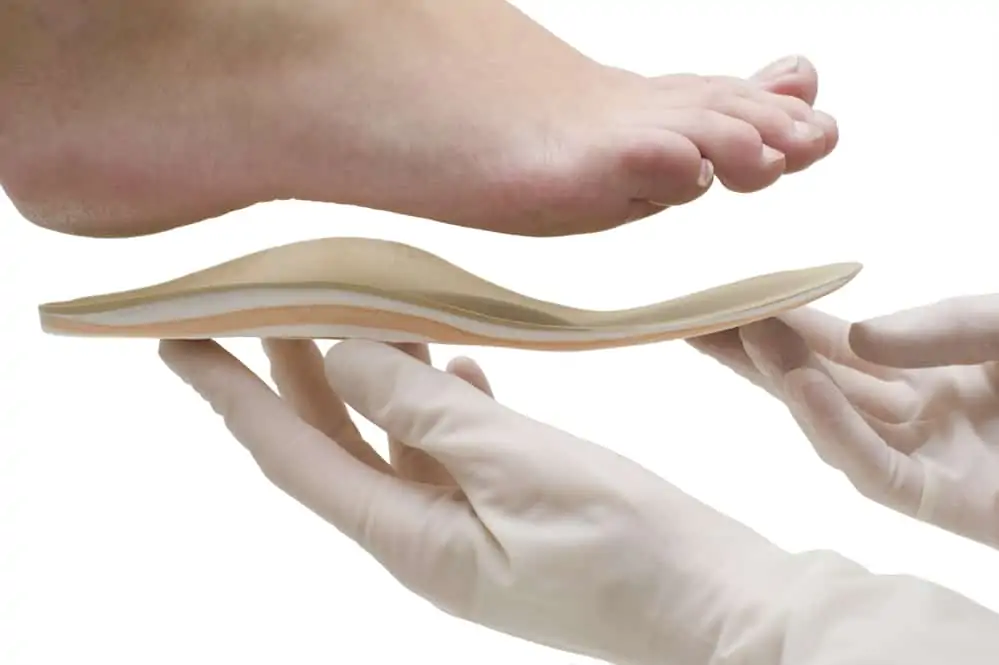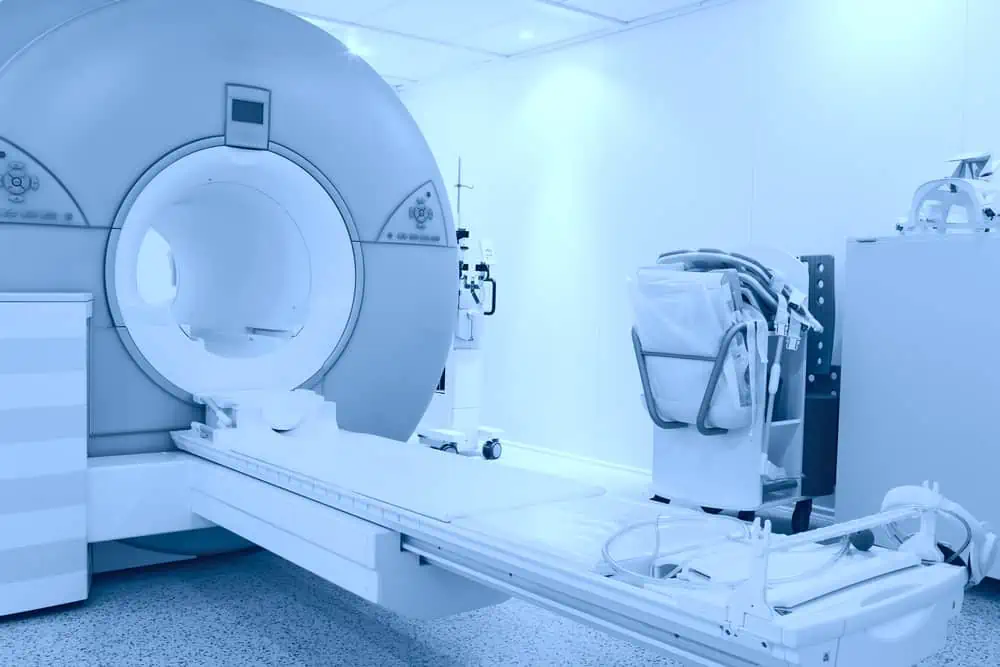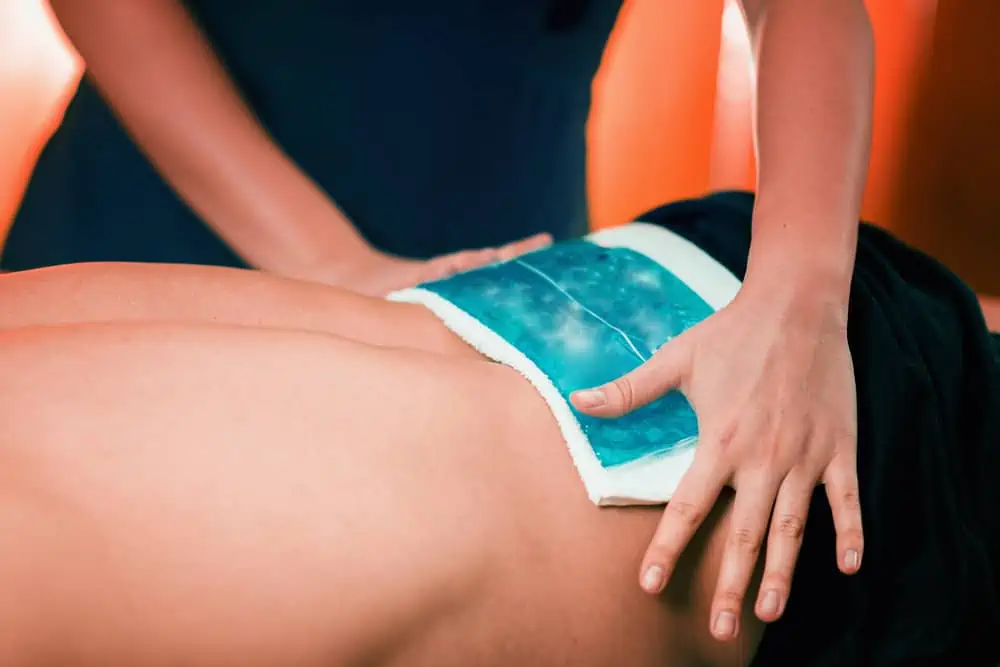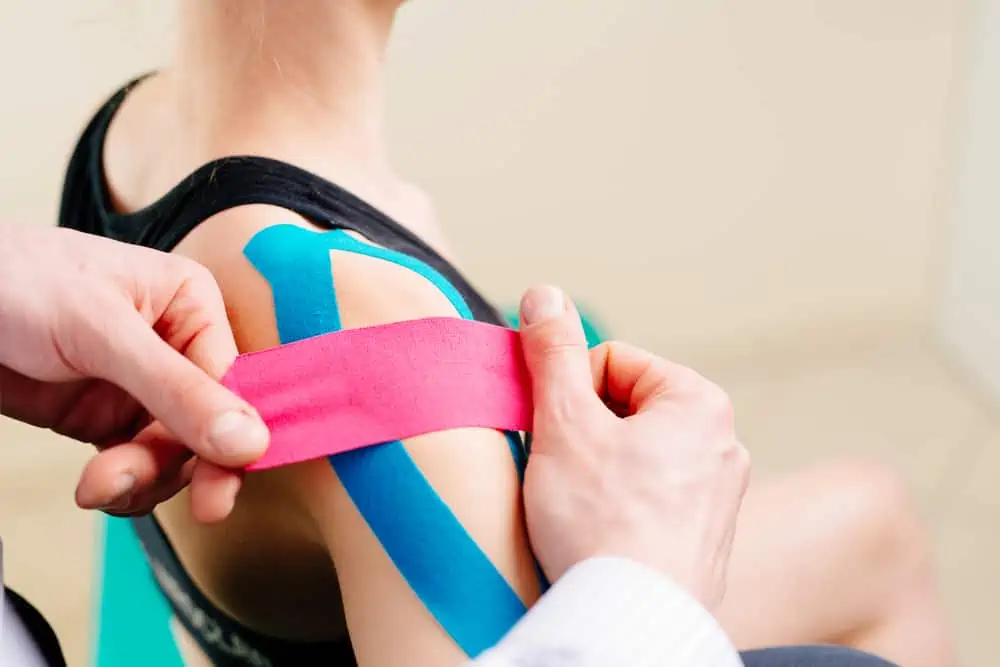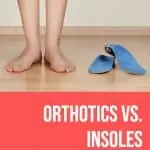This post may contain affiliate links. If you click through a link and make a purchase, I may receive a commission at no additional cost to you. As an Amazon Associate, I earn from qualifying purchases. Read the full disclosure here.
Orthotics and insoles are often used interchangeably, but they have some key differences that could make or break your success with each.
Never fear, this article will easily break down the differences between orthotics vs. insoles so you can make sure to get the features you’re looking for.
Disclaimer: This content is for educational purposes and is not medical advice. Read the full disclaimer.
What are orthotics?
Orthotics are custom shoe inserts, typically made by a podiatrist. They can be constructed to relieve pressure, pain, and support your foot for healthy movement.
Custom orthotics can be constructed from a variety of materials including plastic, carbon fiber, dense foam, and leather.
Orthotics can help to improve your alignment at the foot, ankle, knee, hip, and lower back to treat a variety of issues.
Orthotics can be a valuable part of an overall treatment plan for:
- Foot pronation
- Morton’s neuroma
- Plantar fasciitis/ heel pain
- Shin splints
- Bunions and other foot conditions
- Diabetes
- Patellofemoral pain
- Knee, hip, and lower back pain
Pros of orthotics
- Custom made for your foot
- They can be made to assist/correct foot disorders, aid in shock absorption, and affect posture further up the kinetic chain to improve alignment
- Longer lasting than over-the-counter insoles
- Can be made in various lengths (e.g. ¾, full length) and thicknesses to fit a variety of shoe types
The most significant advantage of custom orthotics is that they are custom made to your foot’s contours and specific needs.
By adjusting the support angles, orthotics can help correct alignment in the feet, ankles, knees, and hips to aid in issues outside of the foot and ankle.
To have enough room for your foot, you will likely need to remove the existing shoe insert and replace it with your custom orthotic (not place it on top).
When you first get a pair of custom orthotics, it may be necessary to wean into your wearing time, so your body gets used to the new alignment. Otherwise, you can experience soreness in the knees, hips, or lower back.
Due to their construction and materials, custom orthotics can last up to several years.
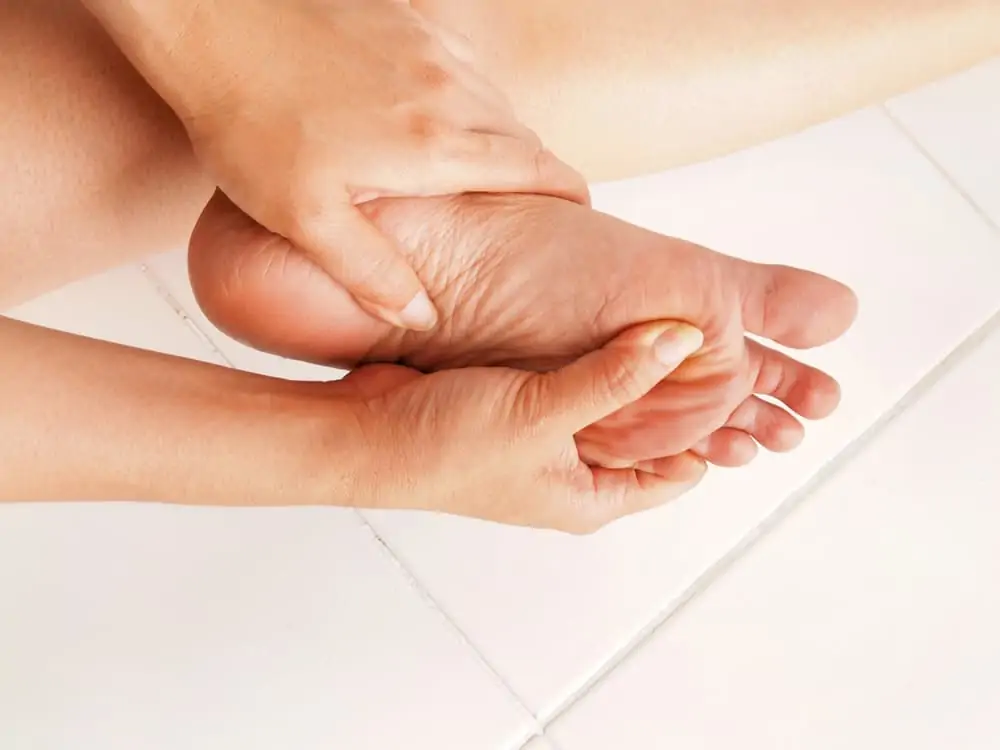
Cons of orthotics
- Expensive
- May require revisions
- They may not fit in all types of shoes
The major downside to custom orthotics is that they can be costly. If not covered by insurance, orthotics can cost several hundred dollars per pair.
Check your insurance benefits to find out if custom orthotics are fully or partially covered and how often you’re eligible for a new pair.
If you require particular features, revisions may be needed to find your perfect fit. Problem-solve with your provider to get the exact comfort you’re looking for.
Orthotics vs. insoles
Insoles are over-the-counter inserts for your shoes designed to cushion or provide arch support.
They are made of various materials including gel, foam, and plastic, and often come in different arch support options.
Insoles are sometimes called prefabricated orthotics, as they are premade to fit most. Many can be trimmed to fit your shoe size.

Examples of over-the-counter insoles are:
Superfeet is one of my favorite brands to recommend because they have several options, are affordable, and last quite a while.
New Superfeet customers can get 10% off with email sign-up – click here and use code WELCOME10.
Powerstep is also a good quality over-the-counter brand that stands up to lots of miles.
Within both of these brands, there are several arch support and thickness options to accommodate different types of shoes.
Pros of insoles
- Less expensive than custom orthotics
- Easy to purchase online or at drug stores, supermarkets, running stores, etc.
- They can help with cushioning, pain relief, or making an existing pair of shoes more comfortable
- Good options for plantar fasciitis
Inserts can be an affordable option over custom orthotics to add arch support or cushioning to shoes to make them more comfortable.
Those with non-specific foot discomfort, fatigue, or plantar fasciitis may start here as an easy fix to alleviate pain.
Cons of insoles
- The quality of the material varies and may wear out quickly
- May not provide as much support or posture correction
- Don’t provide highly specific corrections
Because they’re not constructed specifically to your foot, insoles won’t provide a custom level of support.
Quality varies between brands and insoles may need to be replaced every 4-6 months.

Orthotics vs. insoles – which is right for you?
Many opt for extra cushioning when trying to treat foot pain.
Gel insoles and memory foam are popular options at big box stores and supermarkets. (In my opinion, memory foam inserts wear out quite quickly.)
While cushioning feels excellent and may even relieve some pain, it’s important to remember that structure can also help to support the foot and correct some underlying causes of why the pain is there in the first place.
Here are some ways to tease out if orthotics or insoles are right for you.
Custom orthotics may be right for you if:
- You have specific issues and are looking for a custom level of support
- You’ve tried multiple over the counter options without success
- You have chronic pain, pressure, numbness, or multiple issues in your feet
- If the tread on your shoes gets worn out quickly
- If the arch of your foot collapses inward when you stand and walk
- You want to prevent future issues by maintaining good alignment
Over-the-counter insoles may be right for you if:
- You’re looking for general support or cushioning to make a pair of shoes more comfortable
- You stand a lot during the day
- To use in shoes that don’t have any arch support
- If your shoes wear out quickly
- Excessively high or low arches causing your foot to roll when standing or walking
- To try before buying expensive orthotics
Over-the-counter inserts vary significantly in quality.
My favorite brand to recommend for insoles is Superfeet. They come in various support levels and are much better quality than the typical grocery store insert.
You can check out Superfeet on Amazon or the Superfeet website (they sometimes run sales!).
New Superfeet customers can get 10% off with email sign-up – click here and use code WELCOME10.
Some running stores have Superfeet insoles in the store and will allow you to try them on before buying.
It’s also important to start with quality footwear. Orthotics or insoles work best when combined with a good pair of shoes. If you’re trying to add insoles to a flimsy slip-on pair, you probably won’t see much improvement.
Check out 11 Signs You’re Wearing Bad Shoes For Your Workout where I outline easy tips to look out for.
Wrapping up
Both orthotic inserts and over-the-counter insoles can be a helpful part in managing pain or rehabilitating from an injury.
Knowing the key differences can help guide you toward the right choice for you.
If you still have questions, speak with a podiatrist and/or physical therapist for specific recommendations.
REFERENCES
Zhai JN, Qiu YS, Wang J. Effects of orthotic insoles on adults with flexible flatfoot under different walking conditions. J Phys Ther Sci. 2016;28(11):3078-3083. doi:10.1589/jpts.28.3078
Ferber R, Hettinga BA. A comparison of different over-the-counter foot orthotic devices on multi-segment foot biomechanics. Prosthetics and Orthotics International. 2016;40(6):675-681. doi:10.1177/0309364615584660

